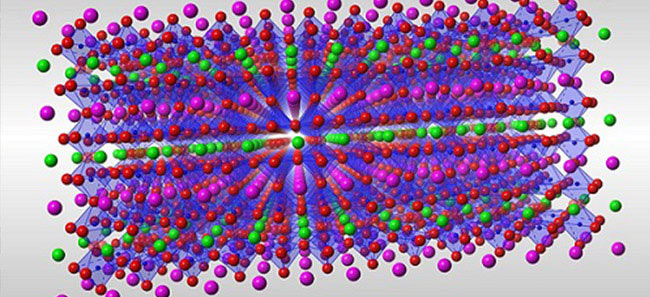
UV Light Reveals Opportunities for Rechargeable Battery, Fuel Cell Design
TSUKUBA, Japan, Sept. 9, 2021 — Researchers from the University of Tsukuba and collaborators have shown that UV light can modulate oxide ion transport in a perovskite crystal at room temperature. The discovery opens new avenues in perovskite research for rechargeable batteries and fuel cells, which could help increase environmental sustainability for the automotive industry.
Battery and fuel cell electrolyte performance depends on the motions of electrons and ions within the electrolyte. The modulation of the motion of oxide ions within the electrolyte could enhance future battery and fuel cell functionality — for example, by increasing the efficiency of the energy storage and output.

Researchers from the University of Tsukuba, Tokyo Institute of Technology, Hiroshima Institute of Technology, and others induced substantial motion of oxide ions within perovskite crystals by using pulses of ultraviolet light. Courtesy of the University of Tsukuba.
The use of light to modulate the motions of ions — which expands the source of possible energy inputs — has only been demonstrated for small ions, such as protons.
“Traditionally, transport of heavy atoms and ions in solid-state materials has been challenging,” said Masaki Hada, co-senior author of the study. “We set out to devise an easy means to do so in a way that seamlessly integrates with sustainable energy inputs.”
The researchers focused on cobalt double-perovskite crystals that are similar to common materials in fuel cell research. When they shined ultraviolet light on the crystals at room temperature, the oxide ions became displaced without destroying the crystals. This meant that the crystals’ function was retained.
“Electron diffraction results, spectroscopy results, and corresponding calculations confirmed this interpretation,” Hada said. “At a delivered energy of 2 mJ per sq cm, approximately 6% of the oxide ions undergo substantial disorder in the crystals within several picoseconds, without damaging the crystal.”
Typically, cobalt-oxygen bonds restrict oxide motion dramatically, though ultraviolet light-induced electron transfer can break these bonds. This facilitates oxide ion motion in a way that accesses several states pertinent to storing the light energy input.
The work could also see use in commercial-scale renewable energy systems.
The research was published in Applied Materials Today (www.doi.org/10.1016/j.apmt.2021.101167).
Published: September 2021